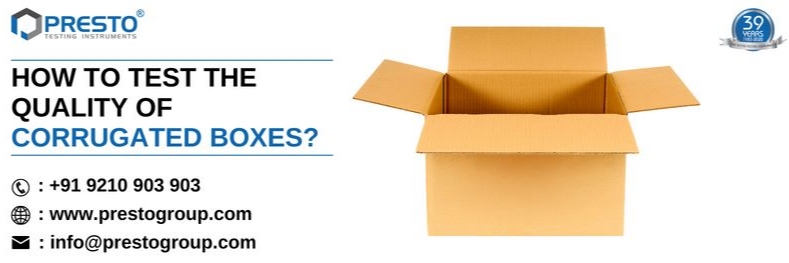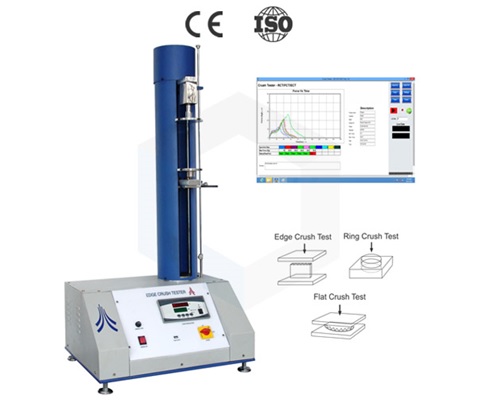How To Test The Quality of Corrugated Boxes?

Corrugated boxes and sheets are essential components of the packaging industry. Largely used in transportations, they should be strong enough to bear the external stress. To make them fit to use in different applications, corrugated fibre boxes undergo stringent testing process. If the packer knows different properties of the CFBs, appropriate precautionary measures can be taken.
Bursting strength test – As these boxes are meant to carry consignments of variable weights, their bursting strength is assessed prior selecting for packing. Bursting strength tester applies hydraulic or pneumatic pressure on the test sample. A round sample is clamped on the fixture and desired pressure to be applied is set using gauges. Glycerin is used as a medium to create hydraulic pressure on the rubber diaphragm. As this diaphragm expands, it transfers equivalent pressure on the sample until it burst. The pressure applied to burst the sample is measured and displayed on the screen or gauge. Considering this, the bursting strength factor can be calculated.
Bursting Factor = Bursting Strength (Kg/cm2) x 1000 / Grammage (gm/m2)
Edge crush test – A corrugated fibre sheet has a structure where a thin sheet having ridges and furrows are sandwiched between two linear boards. These ridges and furrows distribute the pressure equally throughout the surface thus preventing any damage. To assess the strength of this structure three tests is performed primarily on this corrugated structure. Edge crush test, ring crush test, flat crush test. An edge crush tester with different fixtures can be used to perform all these tests. It applies a force from the top on the sample placed in different positions. For edge crush test, the force is applied in axis to the direction of the ridges. In flat crush test, the force is applied on the top of ridges lied in the flat position. In ring crush test, a ring is made out of the thin strip in which ridges are axis to the direction of force applied.
Cobb sizing tester – The raw material used to make CFB is paper, that has a tendency to absorb water. Thus, it is significant to assess how much water the sample can absorb and retain. A Cobb sizing tester is used for this process, which is a simple assembly to clamp the test sample beneath the cylindrical stainless-steel cavity. This cavity is filled with water when the sample is just beneath it. After some time, the sample is removed. It is pressed with heavy steel roller to remove excess water out of it. The difference in weight of the sample before and after the test is Cobb value of the CFB.
For more information regarding bursting strength test, edge crush tester and Cobb sizing tester, drop a query.
you may also like
Recent News
- Paper & Packaging Testing Instruments
- Paint, Plating & Coating Testing Instruments
- Plastic & Polymer Testing Instruments
- Environmental Testing Chambers
- PET & Preform Testing Instruments
- Color Measuring Testing Instruments
- View Entire Range Instruments

Catalogue 2023
Get information about new product launches, research, innovation and endeavors at Presto.
download Free Copy
Get a Quote


